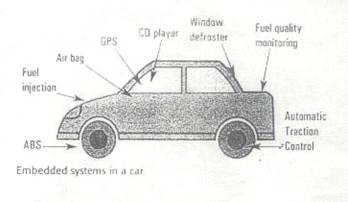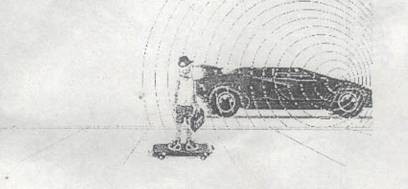





Published on Feb 14, 2025
There are several tasks in which real time OSs beat their desktop counterparts hands-down. A common application of embedded systems in the real world is in automobiles because these systems are cheap, efficient and problem free.
Almost every car that rolls off the production line these days makes use of embedded technology in one form or the other. RTOSs are performed in this area due to their fast response times and minimal system requirements.
Most of the embedded systems in automobiles are rugged in nature, as most of these systems are made up of a single chip. Other factors aiding their use are the low costs involved, ease of development, and the fact that embedded devices can be networked to act as sub modules in a large system. No driver clashes or ‘system busy’ condition happen in these systems. Their compact profiles enable them to fit easily under the cramped hood of a car.
Embedded systems can be used to implement features ranging from adjustment of the suspension to suit road conditions and the octane content in the fuel to anti lock braking systems (ABS) and security systems. Speaking of the things nearer home the ‘computer chip’ that control fuel injections in a Hyundai Santro or the one that controls the activation of air bag in a Fiat in a weekend in nothing but an embedded system. Right from brakes to automatic traction control to air bags and fuel/air mixture controls, there may be upto 30-50 embedded systems within a present-day car. And this is just a beginning.
Embedded systems can also make driverless vehicle control a reality. Major automobile manufacturers are already engaged in work on these concepts. One such technology is Adaptive Cruise Control (ACC).
ACC allows cars to keep safe distances from other vehicles on busy highways. The driver can set the speed of his car and the distance between his car and others. When traffic slows down, ACC alters vehicle speed using moderate braking. This ensures that a constant distance is maintained between cars. As soon as traffic becomes less, ACC moves up to the desired cruise speed that has been set by the driver. The driver can over ride the system any time he wants to be breaking.
Each car with ACC has a micro wave radar unit or laser transceiver fixed in front of it to determine the distance and relative speed of any vehicle in the path. The ACC computer (What else but an embedded system or a grouped system of embedded system) constantly controls the throttle and brakes of the car. This helps to make sure that the set cruise speed or adapted speed of traffic at that time is not exceeded.

As already mentioned each car with ACC have a micro wave radar unit fixed in front of it to determine the distance and relative speed of any vehicle in it's path. The principle behind the working of this type of radar is- the Doppler Effect.
Doppler Effect is the change in frequency of the waves when there is a relative motion between the transmitting and receiving units. The two figures below clearly show the Doppler Effect.

In this case the vehicle is speeding towards the stationary listener. The distance between the listener and the car is decreasing. Then the listener will hear a higher pitch sound from the car, which means the frequency of sound, is increased.

In this case the vehicle is moving away from the listener. The distance between and the car is increasing. Then the listener will hear a lower pitch sound from the car, which means the frequency of sound, is decreased. So that is the Doppler Effect in case of sound waves.Similarly the radar unit in ACC will be continuously transmitting radio waves. They will be reflected and echo singles (reflected waves) will be having the same frequency or different frequency depending on speed/position of the object due to which the echo singles originate. If the echoes singles have the same frequency it is clear that there is no relative motion between the transmitting and receiving ends. If the frequency is increased it is clear that the distance between the two is decreasing and if the frequency is decreased it means that the distance is increasing.
The figure below shows a car having ACC transmitting and receiving radio waves.

In the above case, the gun transmits the waves at a given frequency toward an oncoming car. Reflecting waves return to the gun at a different frequency, depending on how fast the car being tracked is moving. A device in the gun compares the transmission frequency to the received frequency to determine the speed of the car. Here, the high frequency or the reflected waves indicate the motorist in the left car is speeding.
The embedded system is connected to the radar unit and its output will be sent to breaking and accelerating unit as early mentioned the embedded system is a device controlled by instructions stored in a chip. So we can design the chip or ACC having an algorithm such that it will give output only when the input signals are less than the corresponding safe distance value. So only when the between the car and the object in front of it is less then the same distance value the embedded system will give output to the breaking and the accelerating units. Thus the safe distance will be kept always. That's how the ACC works.
| Are you interested in this topic.Then mail to us immediately to get the full report.
email :- contactv2@gmail.com |